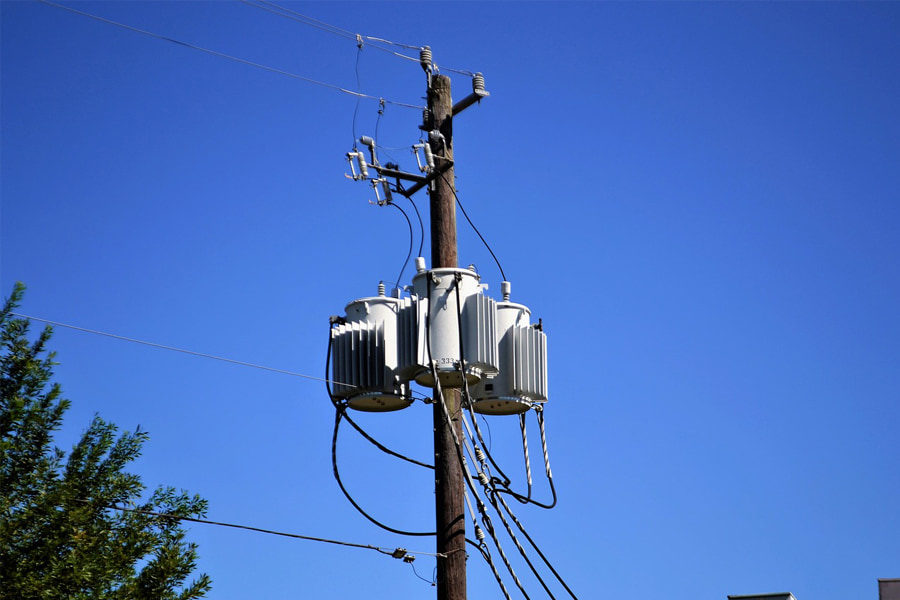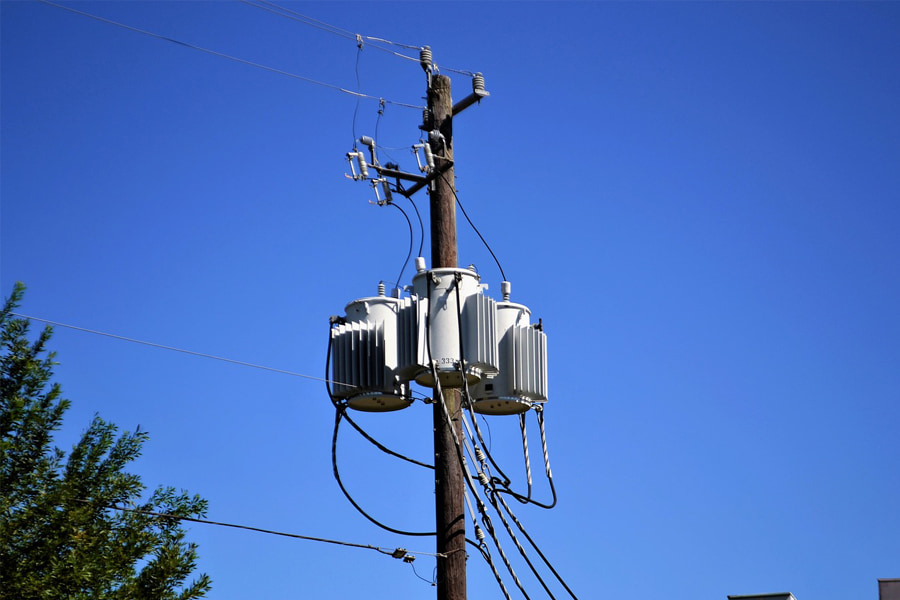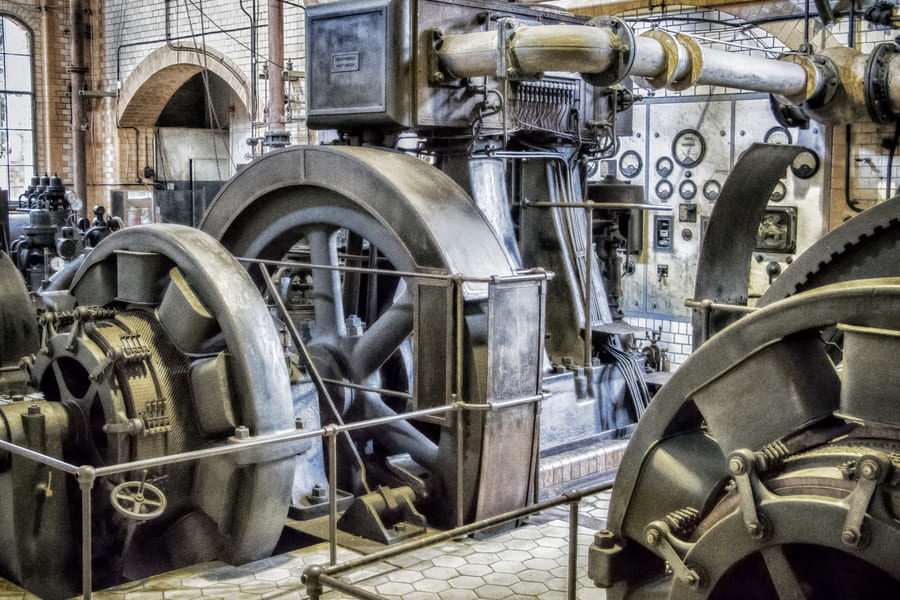
We have a strong desire to live in comfort and luxury. As a result, we have reached a stage where we cannot live without certain conveniences. One such convenience is electricity. It is no secret that humans use to power on a daily basis. We lose that luxury, as well as our mental bliss if there is a power outage. As a result, generators are now necessary on a big scale. Generators are necessary for a variety of situations, not just during crises. When we do not have access to energy at other times, we may need generators. We thought we would tell you about the early versions of generators in this article. There have been quite a lot of early versions when it comes to generators. They did not come to what they are all of a sudden.
About Generators
Before telling you about the early versions of generators, we thought we would tell you about generators a little bit. That is helpful to get a better understanding of the scenario.
A generator is a piece of electric machinery that comes with a variety of accessories. If there is a power outage or blackout, you can utilize them to get electricity. In truth, a blackout might occur for a variety of causes. Additional accessories, on the other hand, are necessary for the generators to work correctly. There are various aspects to consider when purchasing or deciding to acquire a generator. Many manufacturers say that their portable generators are plug-and-play, but this is not always the case. You would need the correct accessories to utilize a portable generator efficiently. Whether the generator is for the house or for RV travel, it makes no difference. Several vocations, like electricians and HVAC professionals, utilize generators.
When buying a generator, the two most crucial elements to consider are the convenience of use and safety. Some add-ons are essential for optimal operation, while others help with preservation and startup.
Pulsar G12KBN Heavy Duty Portable Dual Fuel Generator – 9500 Rated Watts & 12000 Peak Watts – Gas & LPG – Electric Start – Transfer Switch & RV Ready – CARB Compliant
Because of its outstanding 12,000W (GAS)/10,800W (LPG) output, the G12KBN can power large appliances in the event of a power outage. Because of its sturdy frame, convenient drop-down handles, and 10″ never-flat wheels, this generator is portable and easy to store. You can power a multitude of devices at once with four 120V 20A AC outlets, one 120V/240V 30A Twist-Lock outlet, one 120V/240V 50A Outlet, and one 12V DC Output.
Safety
Even though we are majorly focusing on the early versions of generators, it is necessary to get to know about the safety concerns, it is critical to pay attention to this part. It is pointless to learn about the early versions of generators if you do not understand the gravity of the safety concerns with regard to generators.
It is crucial to be aware of the risks associated with utilizing generators. You should be aware of the safety standards that apply to generators if you use them. It is vital that you take all of the appropriate measures. Check to make sure your generator is in good functioning order. If you use a generator wrong, you might end up in a dangerous situation.
Engine exhaust is the source of carbon monoxide poisoning. You may be exposed to carbon monoxide even if you are unable to smell it. If you get ill, dizzy, or weak when running a generator, seek some fresh air as soon as possible. If you are experiencing severe symptoms, you should get medical help right once. Carbon monoxide detectors should have batteries installed. After reading the manufacturer’s instructions, take the appropriate precautions. Electric shock, electrocution, and fire are all possible outcomes. As a result, while using generators, you must be cautious. It is just as vital to understanding why we need generators as it is to know how to use them.
The generators should be placed outside, away from the major structures. Generators are in use in enclosed constructions. Carbon monoxide is produced in large quantities, which can be lethal. As a result, keep generators at least 15 feet from open windows and away from the house. But you can read more about this.
Pulsar 7, 750W Dual Fuel Portable Generator with Switch & Go Technology, PG7750B
When mobility and performance are critical, the Pulsar PG7750B dual fuel generator is an excellent alternative for meeting your power needs. This dual fuel generator shifts between gasoline and liquid propane at the touch of a button. Transition & Go technology allows you to convert from LPG to gas or from gas to LP while the generator is running. This generator is ideal for use on a construction site, in the house, or in the garden. This gadget is a wonderful addition to any portable power collection, as it has a powder-coated steel frame, no-flat tires, a fold-down locking handle, electric start, and cutting-edge technology.
What are the Early Versions of Generators?
Now, we can right away get to know the early versions of generators. Here they are.
- Electrostatic generator
- Faraday disk generator
In the main, these are the early versions of generators that we can exclusively look into. Let us get to know more about them now.
1. Electrostatic generator
Electrostatic generators were there before scientists discovered the relationship between magnetism and electricity. The electrostatic generator is an electromechanical generator that creates high voltage and low continuous current, or static electricity. The fact that the generator generates static electricity is there in its name. Although static electricity has been there since the dawn of civilization, it has remained a fascinating and intriguing phenomenon for many years without a scientific hypothesis to explain its behavior. By the end of the 17th century, scholars had discovered and created viable ways for producing electricity utilizing the phenomena of friction. The extensive development of electrostatic machinery like generators, on the other hand, did not begin until the 18th century.
In most cases, manual (or other) techniques of converting mechanical work into electric energy assist the operation of electrostatic generators. Electrostatic generators use moving plates, drums, or belts to transfer electric flow or the charge to a high potential electrode and create electrostatic charges or the flow of current with opposing charges given to two conductors using just electric forces. Either the triboelectric effect (friction) or electrostatic induction are used to produce the charge. They were only used to power early X-ray tubes, and they were later utilized in some atomic particle accelerators.
A-iPower SUA12000E 12000 Watt Portable Generator Heavy Duty Gas Powered with Electric Start for Jobsite, RV, and Whole House Backup Emergency
The iPower A-SUA12000 has a 12,000-watt starting power and a 9,000-watt operational power. Whether you’re at work, at camp, or at home, you can charge your gear. Its strong 459cc OHV 4 stroke engine has a low oil alert light and will automatically shut down if the oil level drops below a particular level. They make sure your generator keeps working year after year. Thanks to its large 7-gallon gasoline fuel tank, it boasts a 7-hour full-load run duration and a 9-hour half-load operating time. The Electric Start option comes in helpful when you need to start your generator quickly, easily, and conveniently. All of your vital equipment will be powered by the SUA12000e generator. They include your air conditioner, refrigerator, and sump pump, as well as lighting and entertainment centers, in the event of an emergency.
2. Faraday disk generator
Michael Faraday created the first magnetic generator with a Faraday disk in 1831, as you may remember. It consisted of a copper disk rotating between two magnets whose poles were perpendicular to it. The generator produced a lot of current but very little voltage.
Due to self-canceling counter flows of current in parts of the disk not under the influence of the magnetic field, this Faraday disk proved inefficient. If the current is induced immediately under the magnet, the electric flow or current would flow backward in locations where the magnetic field is not applied. However, the created counterflow current restricts the power output to the pickup wires, resulting in an increase in waste heating of the copper disc. Due to the single current channel via the magnetic flux, another shortcoming of this Faraday disk was the low output voltage.
Many investigations have shown that when a wire with numerous turns is used as the coil, a greater and more usable voltage may be generated. As a result, we can see that the output voltage is proportional to the number of turns. As a result, generators may easily be created to generate any desired voltage by adjusting the number of turns. Wire windings became a standard element of all subsequent generator designs after then.
DuroMax Gas Powered Portable 12000 Watt-Electric Start-Home Back-Up & RV Ready, 50 State Approved Generator
The 12,000-watt portable generator from DuroMax offers the power of a home standby generator in a smaller form. The XP12000E combines power and adaptability during a power outage, a storm, or a calamity, making it ideal for running your home’s essential appliances and even central air conditioning. This gear is lightweight and easy to bring to a job site or when camping. On the XP12000E, you may choose between a keyless electronic start and a recoil start. A 457cc DuroMax OHV engine powers the fully loaded power panel, allowing the user to draw up to 12,000 watts of electricity. To suit the most demanding applications, the panel features two 120V/20 AMPits outlets, one 120V/30AMP twist-lock outlet, a 120/240V 30AMP outlet, and a 50-amp heavy-duty outlet. The 120-volt receptacle can accept both 120 and 240 volts at the same time.
Jedlic and the self-excitation phenomenon
This is a section that we told would be worth knowing with regard to the early versions of generators. Another scientist, Ányos Jedlik, began experimenting with electromagnetic spinning devices, which he dubbed electromagnetic self-rotors, in 1827. Both the fixed and revolving portions of the single-pole electric starter prototype (completed between 1852 and 1854) were electromagnetic. Furthermore, the permanent magnet designs were replaced as a result of the groundbreaking discovery of the dynamo’s self-excitation principle. He may have also developed the dynamo concept in 1861, but did not patent it since he believed he was not the first to notice it.
Conclusion
In this article, we focused on the early versions of generators. We hope that you could grab a good understanding of this. If you’d like to know more about generators, you can try history of generators, types of generators, why do we need generators?, general uses of generators, how a generator works, fuel types of generators, warranty of a generator, market availability of commercial generators, generator accessories, portable generators, maintenance of diesel generators, market stats of generator industry, impact of Covid-19 on generator industry





2 comments